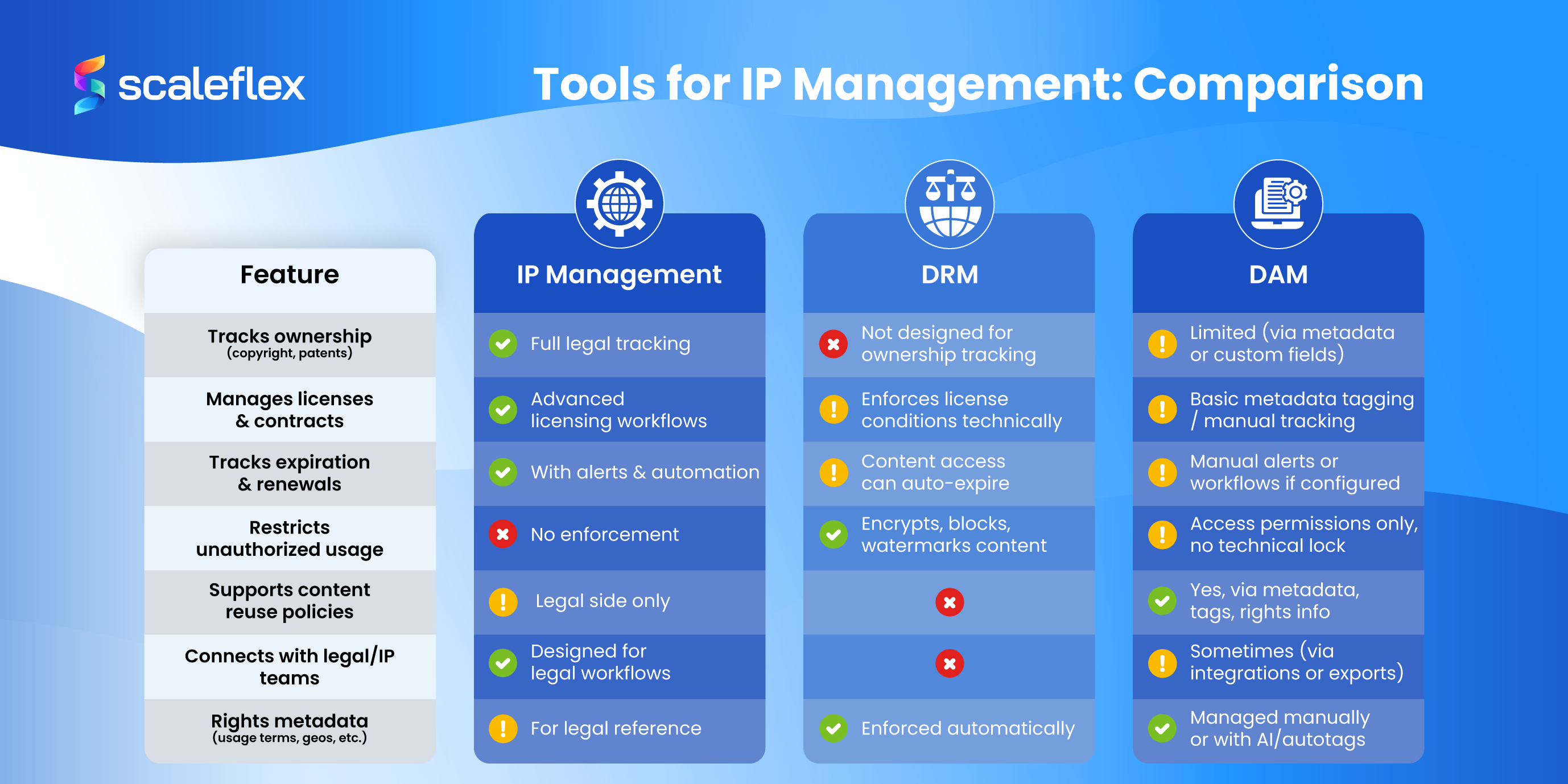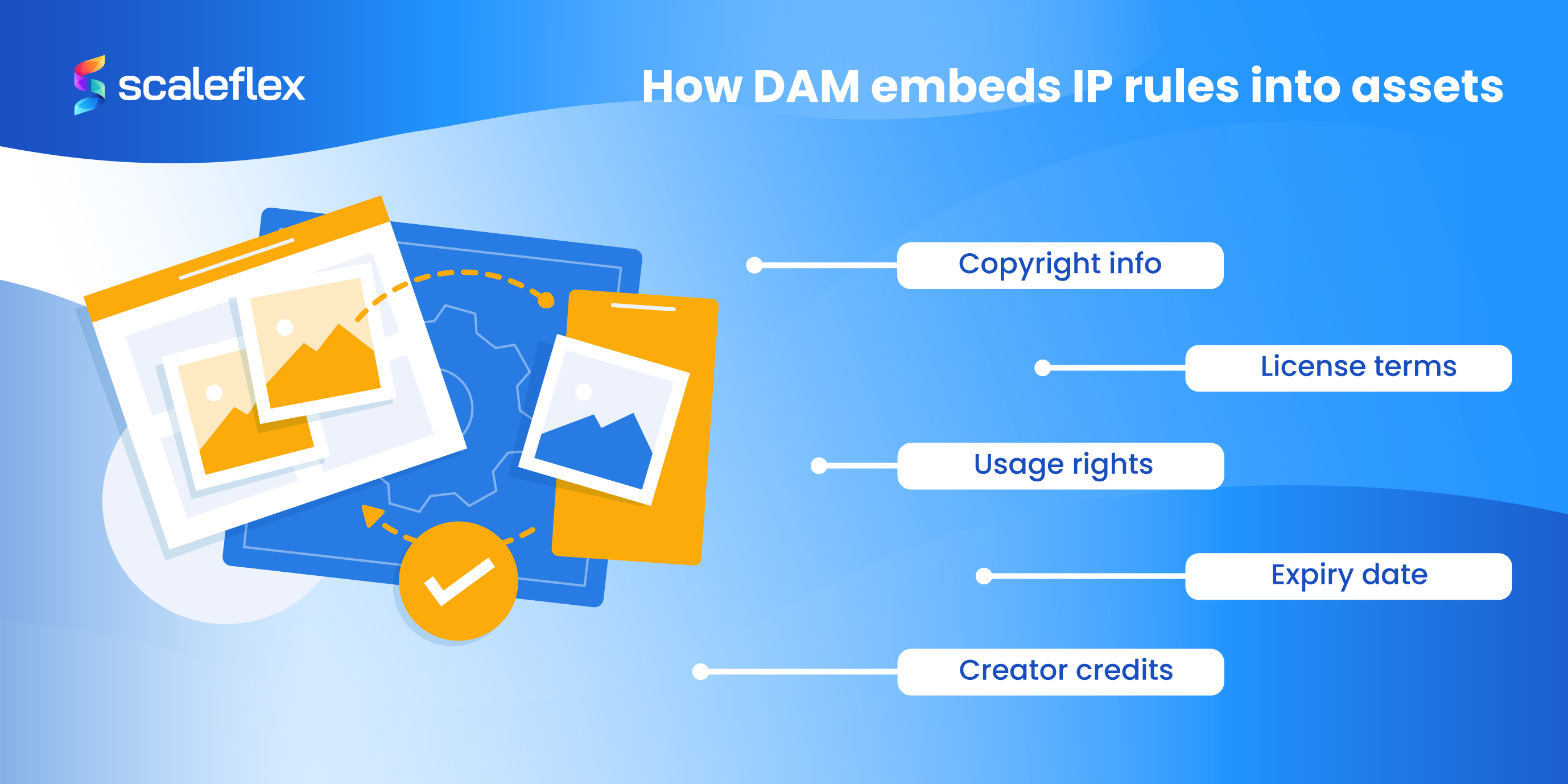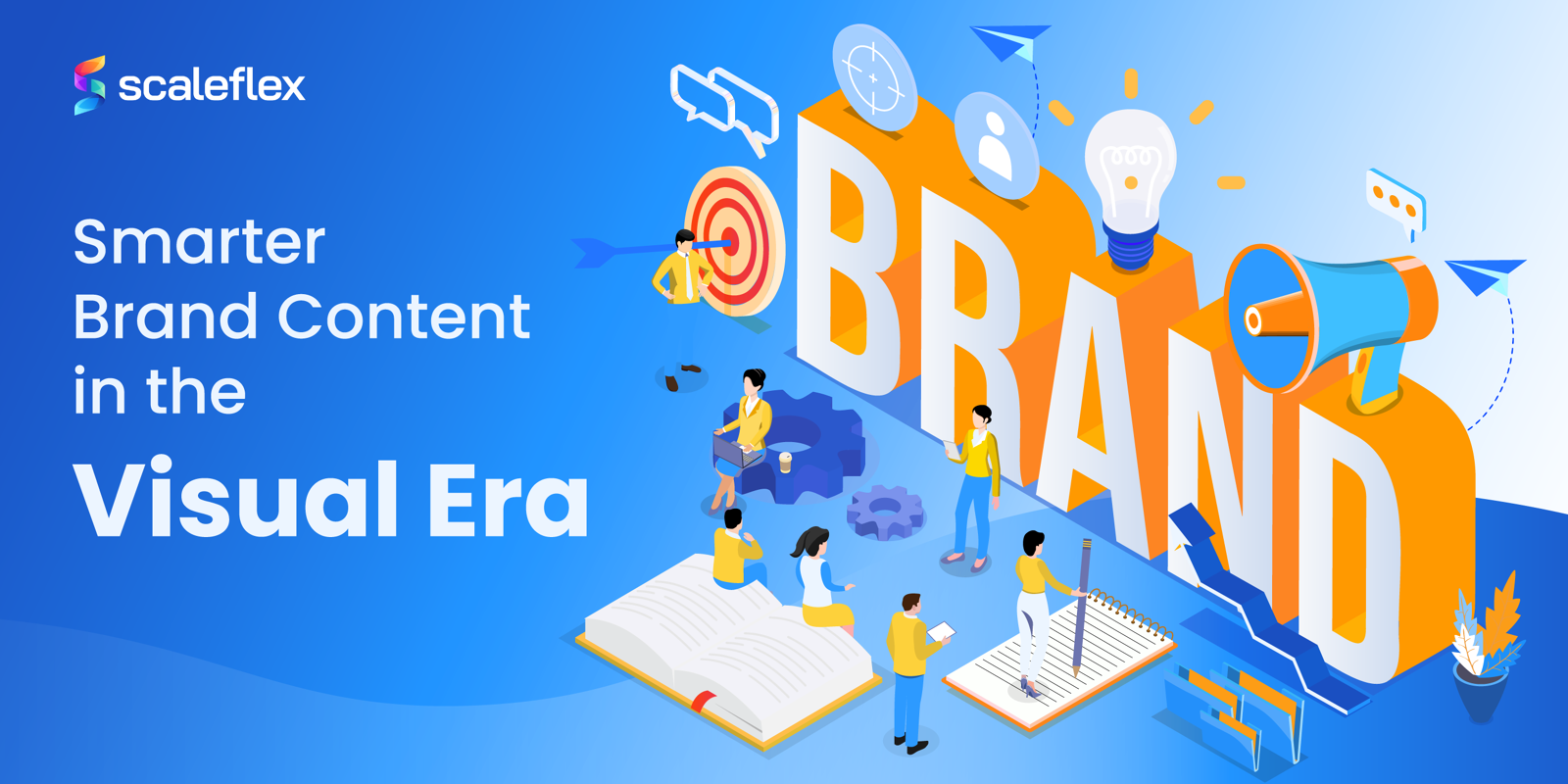Using DAM for Content Rights Management: The Best Intellectual Property Feature Set
Whether they realize it or not, all companies today are content companies. As they deal in product photos, promotional videos, logos, branded templates and more, digital assets are constantly being created and shared at unprecedented rates. What some companies may run the risk of overlooking is this: each asset is also intellectual property - something that can hold legal value and should be protected.
When dealing with creative workflows, content rights management is regarded as something a legal team handles after the creation of the content. However, without adequate upfront structure, rights are easily forgotten, licenses expire and go unnoticed, and the risk of unintentional misuse grows. It is in these upfront structures that the benefits of Digital Asset Management can become a powerful tool for intellectual property asset management.
In this article we’ll explore how DAM can play a pivotal role in managing intellectual property in our digital workflows, and why it’s something teams should be paying more attention to.
Understanding the spectrum of digital intellectual property
When hearing the term “intellectual property”, our minds easily go to patents or trademarks needing to be filed by legal teams. However in digital workflows, content usage rights are much more present as well as visible. Every single photo, video, icon, graph, song snippet or even font used in a campaign is forcibly tied to someone’s rights. If they aren’t clearly tracked, things can quickly become messy.
The trick is this: not all assets are the same. Some of them will be fully owned by the brand, while others are licensed for a specific campaign, region, time period, or all three! Some will be sourced from stock platforms, others from freelancers. Then, there’s user-generated content to add to the mix, which brings its very own set of complications and rules. To keep track of what is yours, what is borrowed, and in what conditions is not only a boring legal formality, it’s a necessity for your business.
Getting it wrong has real consequences. A photo used past its license period can carry fines. An uncredited illustrator might demand a takedown. Innocent, internal confusion, like repurposing an outdated logo, can damage brand consistency at best and at worst, fumble entire campaigns as rights complaints come tumbling in.
The real challenge is having a clear system to handle the fine details. As files are living freely across drives, tools and inboxes, content usage rights information is quietly tucked in contracts, emails or even nowhere at all.
The lack of visibility and traceability is why oftentimes intellectual property issues have a tendency to surface when it’s too late - after the campaign has launched or the complaint has been filed. To understand content rights management in the context of digital content isn’t just a job for lawyers, it’s a shared responsibility for creative, marketing and tech teams alike.
3 key tools that can help you manage intellectual property
As we’ve seen, intellectual property asset management in a digital-first world is a must, but it requires more than just good intentions and spreadsheets. There are certain tools well worth knowing that are designed to reduce risks and bring clarity. Among them, we’ve selected three that stand out: IP Management solutions, Digital Rights Management (DRM) and Digital Asset Management (DAM). While they can sometimes overlap, they each play a distinct role and have different advantages.
The first, IP Management solutions, are built for legal teams. They are designed to track patents, trademarks, copyrights and licensing agreements. They can handle renewals, monitor any infringement and manage all legal documentation. They are the administrative formalities for intellectual property of digital assets, if you will, as they’re not necessarily tied to everyday content usage, but they’re a vital part of protecting the legal foundations.
The second, DRM, is focused on controlling how digital content is accessed and used. Often used by media and publishing to restrict copying, sharing or modifying files, particularly in a commercial context. DRM is much more about enforcement than it is about organization - it protects digital products from unauthorized distribution.
Lastly, DAM systems live much closer to the creative and marketing workflows. They can organize, tag and share content, while they embed intellectual property information such as usage rights and license dates. Unlike DRM, a DAM won’t block access, but it’ll inform and structure, making it easier to stay compliant without slowing teams down. The advantage of a DAM system is that, while it may not be initially constructed for the task, it ticks all the boxes needed for intellectual property asset management, and it is a versatile, multifunctional tool, while the two others serve a limited, niche purpose.

DAM as the compliance backbone for visual content
When we’re talking about intellectual property management, most team’s problem isn’t a lack of good intentions, but of structure. That’s why DAM systems have so rightfully earned their place as excellent intellectual property asset management solutions. Going beyond file organization, a well implemented DAM can act like a central nervous system for compliance.
Let’s see how: every single digital asset can (and should) carry metadata, which are tiny bits of information attached to a file. Said metadata can include copyright details, license terms, usage rights, exploration dates, creator credits, and more. When using a DAM, the information travels always in tandem with the asset. Instead of relying on memory, scattered emails, or files, anyone with access to the file can clearly see what can and can’t be done with it.
DAM systems can also log version history, meaning that if a logo is updated or a photo re-edited, there is a record of what was changed and when. This can be crucial when proving responsible use or defending against infringed intellectual property claims.
Another of DAM’s underrated features: its expiry notifications. When a license is about to run out, the DAM will flag it before it can be used again. This prevents costly oversights that can happen often when deadlines are buried within contracts.
Probably the best part is that DAM does all of this work quietly, in the background. Creatives can focus on their work and output, marketers can manage campaigns, and compliance becomes this built-in aspect of the workflow, nudging things along gently.
Collaborating without compromising: IP management across teams
It should be clear by now that managing digital content usage rights isn’t a solo effort. As designers create, marketers publish and agencies contribute, legal teams are keeping an eye on potential risks. The problem arises when different teams speaking different languages have a hard time understanding one another, particularly when it comes to intellectual property of digital assets.
Imagine a designer takes an image from last year’s campaign. It’s just perfect for an upcoming launch. Its image usage rights expired two months ago, but of course no one catches it until it’s already live. This kind of misstep can’t be chalked up to negligence, it’s about visibility and shared access to important, reliable information.
DAM systems really show their value in these instances as content rights management tools. As single sources of truth, they empower teams to collaborate confidently. The assets live in one place, the same place where the usage rights are clearly noted. Files are marked “expired”, “internal use only”, etc. and the context travels with the asset. Simple and effective.
Companies that work across markets, time zones or employing agency or freelance services need this kind of structure to function. It prevents accidental misuse, reduces friction and fosters trust across teams.

Final thoughts
Most creative and tech teams think that intellectual property is a legal department issue, but in our digital age, it’s become everyone’s concern. Creative teams, marketers and developers are all touching intellectual property everyday, sometimes without even realizing it. This is why structure matters.
A DAM system can provide structure without adding friction or unnecessary new tools. Through them, rights, licenses and usage terms are visible from the get-go. They reduce the risk of mistakes, save time across teams and build accountability into creative workflows.
More importantly than that, they will shift intellectual property from a mere afterthought to a strategic asset. When assets are properly managed, they can be reused confidently, repurposed legally and scaled globally without hesitation.
Visual content is central to brand identity and business performance, and protecting your assets means knowing exactly how and when they can be used.





